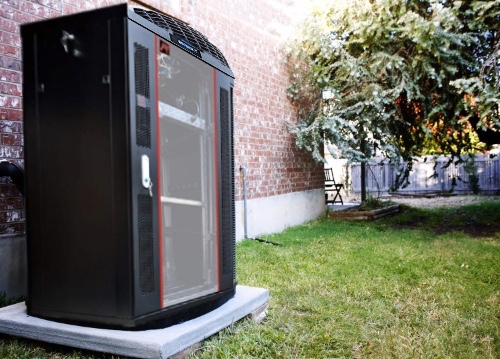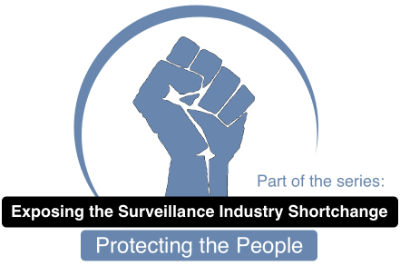Investigating the "Only 24/7 Surveillance Footage is Usable in Court; Motion Recording Can't Be" Claim
We rate this statement as highly misleading and ultimately false, with one sliver of truth.
What's the claim?
There's a security camera company that has been claiming that only 24/7 surveillance footage is usable in court and that motion-based recording is inadmissible as evidence.
Who is Making the Claim
This claim is part of a particular company’s sales pitch which, depending on the salesman, implies or directly states, that only their equipment is usable in court. This is absolutely not the case. Additionally, this company has made several claims that are part of this series and directly markets towards enterprise, corporate, and government-focused clients.
The Sliver of Truth to the Claim
1. The ability to delete footage is extremely problematic from a legal perspective. We were able to find a number of cases where motion-based video footage was tossed out because of insufficient safeguards built into the device to prevent the user from editing or deleting video footage. Many consumer-grade cameras (especially ones that record to the cloud or to an internal SD card) do not prevent anyone from deleting footage from the device. Almost all professional-level devices that record to an NVR do not allow the user to delete footage.
2. Nearly all battery-powered cameras are pretty inadequate, from a security perspective, and are going to be problematic in court. Battery-powered cameras have to do a lot to try to conserve power. They go into a near-zero power usage sleep mode when inactive. When they wake up, they have a noticeable motion delay, sometimes as much as two seconds. That causes them to miss important events and context to their video footage. They also have a motion suppression setting that prevents them from being "woken-up" multiple times for the same incident. This can make it so that important events, like a fistfight on a front porch, may get thirty seconds of video followed by the omission of two minutes of continued fighting that isn't recorded. This is highly likely to be unusable in court, but there is not yet a lot of case law on the subject, as these products are relatively new.
How This Claim is Highly Misleading
If you are an enterprise client who is considering buying a $2,000.00 camera, of course, it is going to look like the better option when compared to a battery-powered doorbell cam.
No sane Chief Security Officer would ever intentionally compare the two products.
How This Claim is Ultimately False
There are cases where motion-based recording has been thrown out of court. But the claim wasn't "sometimes motion-recording video is thrown out." The keyword in the claim was "Only" and that's demonstrably untrue. There are thousands of cases where motion-based video recording has been successfully used in court. If "Only 24/7” was allowed, the preponderance of case law for motion recording would not exist.
So, What are the Best Practices for Making Sure my Video is Usable in Court?
Professional level surveillance footage is almost always trusted by the courts, if you get equipment that follows the best practices listed here and if you maintain the proper chain of custody.
Follow these Best Practices in Picking Surveillance Equipment:
1. Timestamps on the video prove that it hasn’t been edited. The FBI has listed this as the #1 reason why footage gets thrown out. Our NVRs sync time with a server to make sure that the time settings are always accurate. Daylight savings time is an option as it does not exist in all customer locations. There are benefits and drawbacks to enabling it. If enabled, once a year, it creates a missing hour and an extra duplicate hour of footage. If you don't change it or if you use a non-adjustable standard of time like UTC, you may have the added hassle of having to do a little math to find your local time. You can decide to enable DST or not to, but whatever you decide to do, you need to be consistent.
2. You can’t delete or edit parts of a video with the NVR.
3. You can’t use the NVR to open video that has been edited.
Our camera systems (and most other processional level POE camera systems) use their own specific, proprietary implementation of H.264/H.265/custom encoding and digital watermarks used in that specific make/model to store video on the NVR. This means that you can't edit the video in say, Final Cut Pro, and then use the NVR or camera software to play it.
Follow these Best Practices in Maintaining Chain of Custody:
1. Give the entire NVR to your lawyer or the police (depending on whether it is civil or criminal in nature). This can cover a multitude of sins. If, for example, you have the wrong date and time set for the machine, the police or your lawyer can show what the current date and time settings are and use that info to determine the accurate date for the recorded footage.
2. Once they have the NVR, let them pull the footage from the NVR directly. If you have our equipment, our support team will happily assist them with this, if you give us permission in writing. Again, giving the NVR to the authorities is strongly advised. This helps protect you from the claim that you downloaded the footage from the NVR and edited it before turning it into the police/judge.
3. You want to establish that you had no ability to edit the video, so don’t even be the one to pull it off the NVR. This should make it 100% clear that the video has not been edited and give the evidence a clear chain of custody.
What Not to Do
Those times when surveillance footage from professional-grade systems has been tossed out of court was almost entirely related to not following the chain of custody. Being able to prove the chain of custody is, by far, the most important thing in these situations, if you have professional-grade equipment.
Having multiple views/angles of the same event also helps in getting the court to accept the footage.
We're not lawyers, so this isn't legal advice. USA case law used to investigate. Please consult your own country’s laws and regulations if you reside outside the United States. UK resident must also follow the Data Protection Act guidelines. EU residents must also follow the General Data Protection Regulation (GDPR). Australian residents should consult the Surveillance Devices Act 2004 and the Telecommunications and Other Legislation Amendment (Assistance and Access) Act 2018.
If you are considering anything with criminal, civil, or legal implications, please talk to a lawyer. A website search is not a legal representation.

Additional Claims made by the Same Source
EXPOSED - No, NVRs are not "A Single Point of Failure"
EXPOSED - No, NVRs are not "Outdated"
EXPOSED - No Gartner, Forester, and Symantec did not say NVRs are the TOP Security Risk
EXPOSED - No, HIPAA Compliance Doesn't Require 90 Days of Video Surveillance Footage
EXPOSED - No, You Probably Don't Need 90 Days of Video Surveillance Footage for PCI Compliance

Lean on the experts
We'd be happy to work up a custom quote or take your floorplan and create a security coverage map.
Get aCustom Quote




